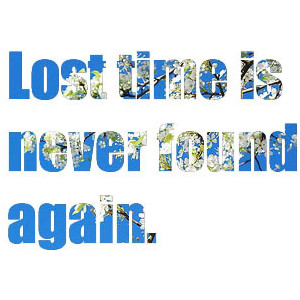I have never read an article, err, “whitepaper,” that was so spot on to the reason I shaped my role in the industry to what it is today. I was e-mailed Forrester’s “Implications of the Splinternet and the Future of Web Analytics” yesterday and read straight through it; twice. This paper was a result of a survey that asked 210 marketers took to evaluate the “pain points they experience while trying to keep pace with the rapidly evolving multichannel digital environment.”
My “Ah ha!’ moments came during various moments in the study, but first I will tell you a little about what I do. I like to look at myself as a hybrid role of a strategist, analyst, community manager, and brand enthusiast. Although I would love to have a minion army working for me, splitting up the roles, I take them all on myself, everyday.
I realized when I graduated, and have only been confirmed of it since, that companies, firms, brands, people (whatever you want to call them) who have somewhat adapted to online marketing in the non-tradition sense (social media, multi-platforms, mobile) are scared. They are scared to fully emerge and strategize their brand on these channels because they don’t know if it will lead to a payout.
“Firms reported that measurement is a top challenge for adapting to fragmentation. The failure of measurement to keep pace creates significant barriers to adoption for marketers because uncertain ROI is the top barrier to adopting new channels in their organizations.”
Now, back to why I created by job role. I already had the skills to be an online media specialist, helping brands utilize platforms based on their audience, message, and service/product. That was simple. What I ran into was, “Well, how do we know spending time on these sites are going to lead customers to purchase?” I knew that this emerging industry was going to need more to back it up then telling a brand to Tweet, Pin, Instagram, or Tumble. I learned analytics, SEO best practices, and the almighty PCC and Google Adwords world. Putting all of these skills together lead me to a place where I could give reasons for strategies and recommendations (with evidence of success) for a brands online goals. Once again, it all starts with strategy. Strategy comes from numbers; numbers turn into creating great content (or let’s hope it does).
“As media fragmentation occurs, what skills do you predict will be most critical to your marketing
organization over the next five years?”
50% surveyed answered “strategy.” The article goes on to state:
“Firms must develop an overarching strategy from which to direct the tools, organization, processes, and measurement capabilities that are necessary to succeed in a fragmented marketing ecosystem.”
So, first comes strategy, then comes testing and implementation (what works, what doesn’t work), and then comes expansion. Although firms are scared that the money they put into “social media” (“WHY? IT’S FREE!?) it is the mind behind the madness takes a lot of work and skills to reach the full potential of a brands online presence.
I have seen so far in my professional career thus far, that case study after case study is showing that brands who adapt to online fragmentation, WILL see a payout. I am finding ways to measure both presence and engagement, AS WELL AS conversions, traffic and CTR. They are all relative. You can’t be successful with out one or the other. The article ends with a page of general recommendations that I would KILL to have CEO’s read, who are weary about online marketing, and the online fragmentation, and where their brand stands.
This is now the longest blog post I have written in awhile and a praise you for reaching the end. So I will leave you to read the article yourself. It will help understand why emerging online media is so important for companies and how you can keep CEO’s happy with real numbers and real results.
“Success is really hard to measure. One of the biggest challenges. The vast majority of our measurement is in terms of
inquiries, leads, pipeline driven and it’s really difficult to measure a social network in that way. How do you measure?
Numbers of members in the community? Or getting the CIO of the biggest company in the country rather than 15
smaller CIOs? It’s about quality and quantity of people in the community.”

























